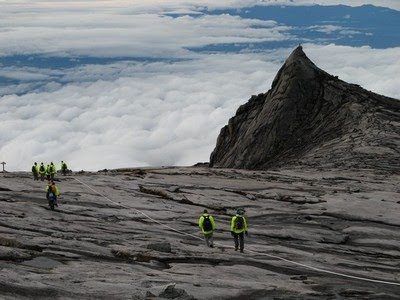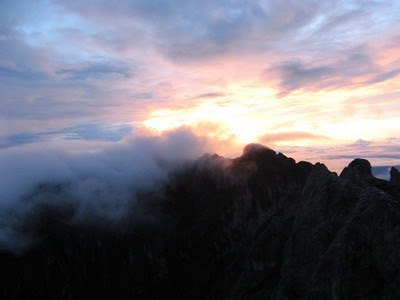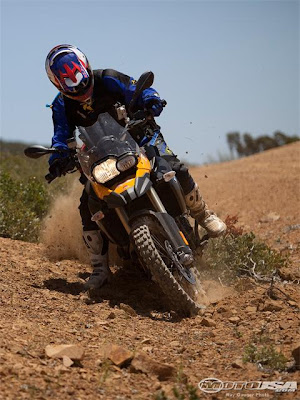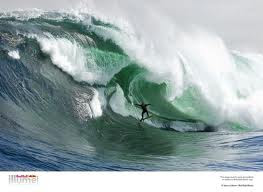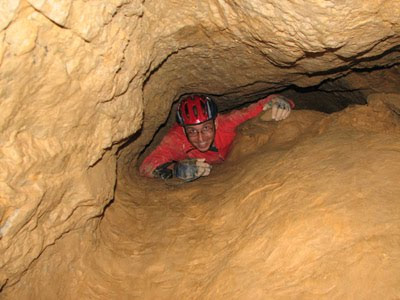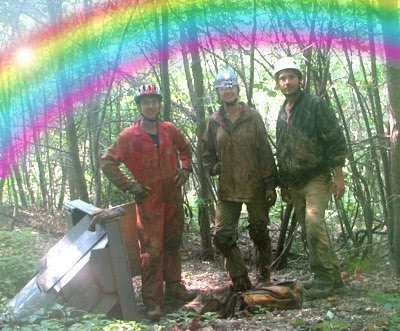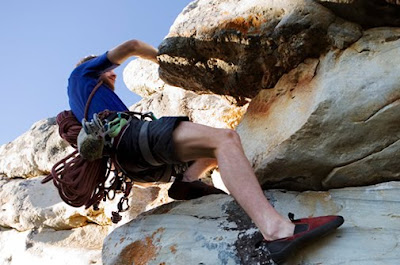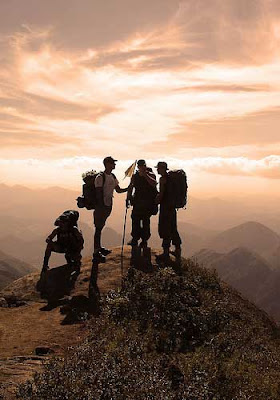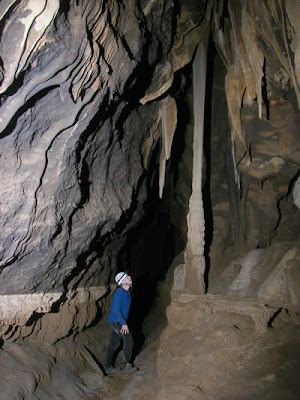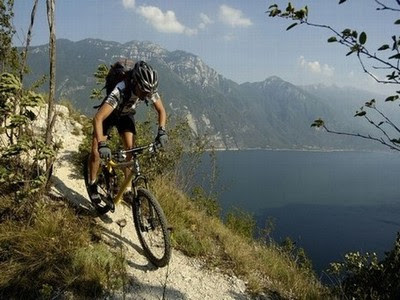Tuesday, December 28, 2010
Friday, December 17, 2010
Elegant Resorts launches Travel Guide Experiences
 With the attention to detail and knowledge of the luxury world for which Elegant Resorts are renowned, clients know they can rely on us for the holiday experience of a lifetime. Moreover, whether they are looking for exploration or inspiration, exhilaration or introspection, with Elegant Resorts they know that they won’t have to compromise luxury along the way.”
With the attention to detail and knowledge of the luxury world for which Elegant Resorts are renowned, clients know they can rely on us for the holiday experience of a lifetime. Moreover, whether they are looking for exploration or inspiration, exhilaration or introspection, with Elegant Resorts they know that they won’t have to compromise luxury along the way.”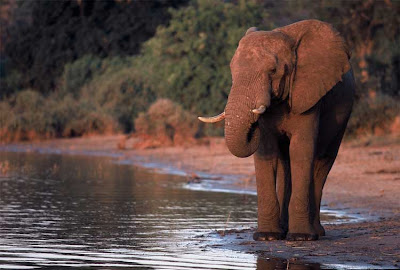 The Exhilarate Guide offers Space Travel with Virgin Galactic and journeys currently planned to start in 2011. If you just can’t wait that long, try the Zero-gravity and NASTAR space experiences. You can also try to fly with the blades aerobatic squed in Scotland; Explore the waterfalls and glaciers of Argentina via boat trips, tours and treks across the ice; Heli-skiing in Blanket Bay, New Zealand, and Horse-back safaris in Tanzania’s Serengeti. Sports fans can use the guide to discover some of the top sporting events for the coming year from tennis and golf to horseracing and rugby.
The Exhilarate Guide offers Space Travel with Virgin Galactic and journeys currently planned to start in 2011. If you just can’t wait that long, try the Zero-gravity and NASTAR space experiences. You can also try to fly with the blades aerobatic squed in Scotland; Explore the waterfalls and glaciers of Argentina via boat trips, tours and treks across the ice; Heli-skiing in Blanket Bay, New Zealand, and Horse-back safaris in Tanzania’s Serengeti. Sports fans can use the guide to discover some of the top sporting events for the coming year from tennis and golf to horseracing and rugby.Thursday, December 9, 2010
Dark Adventure Radio Theatre
 The HP Lovecraft Historical Society, creators of the silent film The Call of Cthulhu and many other strange things, produced the recording. Troy Sterling Nies was enlisted to compose original music. With assistance from his son, Storm, Nies also recorded the sounds of genuine North Dakota snow and ice to bring realism to the production. The HPLHS enlisted a cast of professional Los Angeles actors to join them for recording sessions. The final recording was treated with the HPLHS proprietary Mythophone technology to bring the feel of 1930s radio to modern audio equipment.
The HP Lovecraft Historical Society, creators of the silent film The Call of Cthulhu and many other strange things, produced the recording. Troy Sterling Nies was enlisted to compose original music. With assistance from his son, Storm, Nies also recorded the sounds of genuine North Dakota snow and ice to bring realism to the production. The HPLHS enlisted a cast of professional Los Angeles actors to join them for recording sessions. The final recording was treated with the HPLHS proprietary Mythophone technology to bring the feel of 1930s radio to modern audio equipment.Tuesday, November 30, 2010
Sailing Adventure in Sweden
 Martin Strandberg and Johan Örtendahl of Team Thule flourished in these tough conditions, and were announced winners of the Archipelago Raid today. After putting in an amazing effort at this tough sailing event, the team proved they had the right stuff, winning five out of the ten sailing legs. During much of the event, the team battled for the top spot against last year's Raid winners Eric Proust and Romain Motteau of Team Citus, but with team Thule's stellar performance over the last couple of days (winning every leg), Team Citus fell back in the scoring, and had to settle for second this year.
Martin Strandberg and Johan Örtendahl of Team Thule flourished in these tough conditions, and were announced winners of the Archipelago Raid today. After putting in an amazing effort at this tough sailing event, the team proved they had the right stuff, winning five out of the ten sailing legs. During much of the event, the team battled for the top spot against last year's Raid winners Eric Proust and Romain Motteau of Team Citus, but with team Thule's stellar performance over the last couple of days (winning every leg), Team Citus fell back in the scoring, and had to settle for second this year. Team Thule started the last day of the Archipelago Raid three points behind Team Citus, but 34 year old Strandberg and 27 year old Örtendahl had a fire in their bellies - determined to take the trophy back for a Swedish team. After sleep deprivation from camping in tents, and physical exhaustion from the effort of sailing (and sometimes paddling) through the Archipelago, Martin and Johan, gave every final bit of their effort, and showed what pure determination can accomplish as they won both legs today, just as they had done the day before.
Team Thule started the last day of the Archipelago Raid three points behind Team Citus, but 34 year old Strandberg and 27 year old Örtendahl had a fire in their bellies - determined to take the trophy back for a Swedish team. After sleep deprivation from camping in tents, and physical exhaustion from the effort of sailing (and sometimes paddling) through the Archipelago, Martin and Johan, gave every final bit of their effort, and showed what pure determination can accomplish as they won both legs today, just as they had done the day before.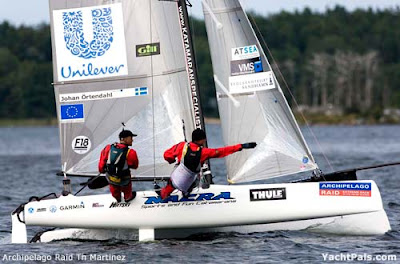 “It was fantastic, a really tough race. Eric [Proust, of Team Citus] was sailing so well so we had to put 200 per cent to beat him.”, said the overjoyed Swedish skipper upon winning the Raid. Martin Strandberg couldn't keep his excitement to himself, adding “you can’t finish better than this. I think is just an ultimate sailing race. You’ve got everything: nature, sailing, navigation, tactics - everything!”
“It was fantastic, a really tough race. Eric [Proust, of Team Citus] was sailing so well so we had to put 200 per cent to beat him.”, said the overjoyed Swedish skipper upon winning the Raid. Martin Strandberg couldn't keep his excitement to himself, adding “you can’t finish better than this. I think is just an ultimate sailing race. You’ve got everything: nature, sailing, navigation, tactics - everything!”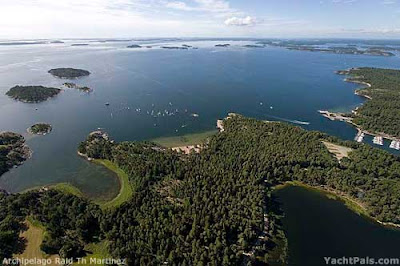 Another team who truly enjoyed the sailing in Sweden this week were Brits Luke Yeats and Matthew Humphreys of Team Cobalt. The pair finished the Archipelago Raid as the best rookies, in eighth overall. “This has been probably the best organized event I’ve ever sailed at. We had all the organization boats with us all the time and getting all the tents and food arranged in the middle of nowhere and having almost thirty boats through a very complicated course… it was really worth the tough moments.”
Another team who truly enjoyed the sailing in Sweden this week were Brits Luke Yeats and Matthew Humphreys of Team Cobalt. The pair finished the Archipelago Raid as the best rookies, in eighth overall. “This has been probably the best organized event I’ve ever sailed at. We had all the organization boats with us all the time and getting all the tents and food arranged in the middle of nowhere and having almost thirty boats through a very complicated course… it was really worth the tough moments.” William Sunnucks and Simon Farren, of Team Audio Network, also know a bit about tough moments at the Raid. The team put in a great performance as they weaved their F18 catamaran around the Swedish Archipelago over the last six days, but their hopes of an overall win were dashed yesterday after hitting an inconveniently placed rock, pushing them back to third place overall in the Raid. No doubt they will be studying those charts over the winter, ready to give it a go at next year's Archipelago Raid.
William Sunnucks and Simon Farren, of Team Audio Network, also know a bit about tough moments at the Raid. The team put in a great performance as they weaved their F18 catamaran around the Swedish Archipelago over the last six days, but their hopes of an overall win were dashed yesterday after hitting an inconveniently placed rock, pushing them back to third place overall in the Raid. No doubt they will be studying those charts over the winter, ready to give it a go at next year's Archipelago Raid.Monday, November 22, 2010
RawHyde Adventure Rider Challenge
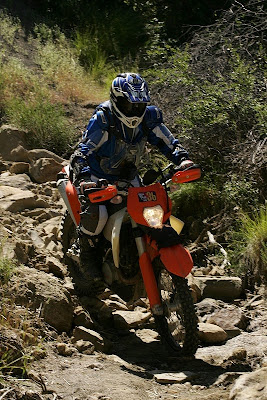 “People like competition, they either like to watch it or be in it,” Hyde says. “These GS bikes are like modern day cowboy stuff.”
“People like competition, they either like to watch it or be in it,” Hyde says. “These GS bikes are like modern day cowboy stuff.” Easy laughter and subdued excitement filled the outdoor tent as we gathered for the rider’s meeting. Del’s assurance that even BMW’s largest machine could pass seemed to be good enough for riders who were anxious to get underway. The majority had already formed three-man teams so those of us who hadn’t were put together to make a trio. I was joined with Chad Yoshitomi and Joe Egan who, like me, were first-timers at the ARC. Baseline scoring is determined using one big bike and one small bike per team. Larger bikes are obviously a disadvantage in this situation, so teams with two big bikes were given a two-minute deduction and teams with only small bikes were penalized. Anything that’s not a 1200GS, GS Adventure or comparable older model is considered small. Armed with my F800GS, the choice was between Chad’s heavily armored R1150GSA, which would give us a standard setup, and Joe’s Honda XL650. Bolstered by Joe’s disregard for mechanical damage, our makeshift squad opted to travel light - penalty be damned, we’d throw that bike across the finish line if need be.
Easy laughter and subdued excitement filled the outdoor tent as we gathered for the rider’s meeting. Del’s assurance that even BMW’s largest machine could pass seemed to be good enough for riders who were anxious to get underway. The majority had already formed three-man teams so those of us who hadn’t were put together to make a trio. I was joined with Chad Yoshitomi and Joe Egan who, like me, were first-timers at the ARC. Baseline scoring is determined using one big bike and one small bike per team. Larger bikes are obviously a disadvantage in this situation, so teams with two big bikes were given a two-minute deduction and teams with only small bikes were penalized. Anything that’s not a 1200GS, GS Adventure or comparable older model is considered small. Armed with my F800GS, the choice was between Chad’s heavily armored R1150GSA, which would give us a standard setup, and Joe’s Honda XL650. Bolstered by Joe’s disregard for mechanical damage, our makeshift squad opted to travel light - penalty be damned, we’d throw that bike across the finish line if need be.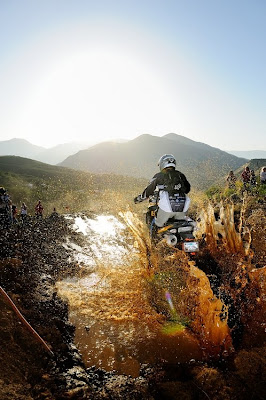 "In other conditions of mind I might have had courage to end my misery at once by a plunge into one of these abysses; but now I was the veriest of cowards."
"In other conditions of mind I might have had courage to end my misery at once by a plunge into one of these abysses; but now I was the veriest of cowards."source: www.adventureriderchallenge.com
Saturday, November 20, 2010
Wednesday, November 10, 2010
Perfecting Your Off Road Driving Skills - Practice Makes Perfect
From the September, 2008 issue of 4Wheel & Off-Road
By Kevin McNulty
Photography by Kevin McNulty
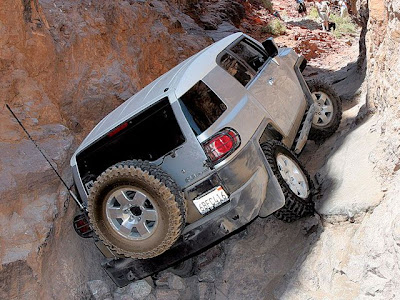 Whatever hobby or sport we consider our passion, there was a point in time when we knew very little about it, and for some of us, four-wheeling was that sport.
Whatever hobby or sport we consider our passion, there was a point in time when we knew very little about it, and for some of us, four-wheeling was that sport. Anyone can get in a truck and drive, but do they know how to read the terrain ahead of them, and will they know how to react and handle the vehicle and its suspension when it's placed in precarious or dangerous positions? Do they know how to safely spot another driver over an obstacle? Reading a vehicle and terrain at the same time is a skill that's learned from hands-on experience. Basic driving skills are used on the trail, but many factors of automotive physics need to be addressed and there are literally hundreds of other things to consider when driving off highway, such as knowing when it's appropriate to clutch, brake, and accelerate.
Anyone can get in a truck and drive, but do they know how to read the terrain ahead of them, and will they know how to react and handle the vehicle and its suspension when it's placed in precarious or dangerous positions? Do they know how to safely spot another driver over an obstacle? Reading a vehicle and terrain at the same time is a skill that's learned from hands-on experience. Basic driving skills are used on the trail, but many factors of automotive physics need to be addressed and there are literally hundreds of other things to consider when driving off highway, such as knowing when it's appropriate to clutch, brake, and accelerate.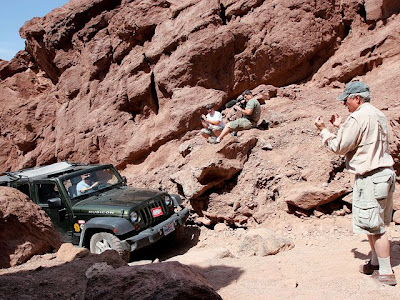 Wheeling doesn't always have to be extreme and hard-core, and the staff here at 4-Wheel & Off-Road is always looking for trail time of any form, so when the opportunity to ride along on a rock training clinic for novice four-wheelers popped up, we jumped at the chance. Tom Severin, president of Badlands Off-Road Adventures, holds training clinics and overl and adventure outings around California and the Western U.S. Severin is certified by the International 4-Wheel Drive Trainers Association and is a professional 4WD off-road training instructor with more than 40 years of experience. To top off his credentials, he's an easygoing, nice guy and a fun person to hang out with on the trail.
Wheeling doesn't always have to be extreme and hard-core, and the staff here at 4-Wheel & Off-Road is always looking for trail time of any form, so when the opportunity to ride along on a rock training clinic for novice four-wheelers popped up, we jumped at the chance. Tom Severin, president of Badlands Off-Road Adventures, holds training clinics and overl and adventure outings around California and the Western U.S. Severin is certified by the International 4-Wheel Drive Trainers Association and is a professional 4WD off-road training instructor with more than 40 years of experience. To top off his credentials, he's an easygoing, nice guy and a fun person to hang out with on the trail.Monday, November 8, 2010
Hike the Zion Narrows, Utah
Thursday, November 4, 2010
Colorado Hiking
 With 53 14,000 foot peaks, as well as a few thousand lower peaks, Colorado is one of the best hiking destinations in the United States. On a Colorado hiking trip, you can experience trails with elevations that range from as low as 3,337 feet, to as high as 14, 433 feet. Even in the urban environments of Denver and Boulder, you are always in close proximity to some exciting Colorado hiking trails. In fact, many people who visit Colorado from sea level locations spend a few days hiking these trails in order to acclimate to the high altitude. Hiking Colorado can be a great experience, as long as you adhere to a few safety precautions.
With 53 14,000 foot peaks, as well as a few thousand lower peaks, Colorado is one of the best hiking destinations in the United States. On a Colorado hiking trip, you can experience trails with elevations that range from as low as 3,337 feet, to as high as 14, 433 feet. Even in the urban environments of Denver and Boulder, you are always in close proximity to some exciting Colorado hiking trails. In fact, many people who visit Colorado from sea level locations spend a few days hiking these trails in order to acclimate to the high altitude. Hiking Colorado can be a great experience, as long as you adhere to a few safety precautions.Saturday, October 16, 2010
Basic Knowledge of Mountain Hiking
Wednesday, September 29, 2010
Rafting
Thursday, September 2, 2010
Sport Climbing in Patagonia
 Sport Climbing in Patagonia
Sport Climbing in PatagoniaThursday, August 26, 2010
Caving
Jeff in kitchen: Snorts audibly.
Me: “I just don’t think I can crawl underground on my belly between giant boulders. Underground.”
Joshua: “Cheyenne doesn’t want any belly crawls.”
Me: “Ask him about the mud.”
Joshua: “He says, ‘what about crawling on your side?’”
Jeff: Rolls eyes back into head.
Me: “Foot, Down.”
Joshua: “So, uh, any other caves where you don’t have to belly-crawl?”
There are; one is in Pennsylvania not an hour’s drive from CJ’s house.
THE CAVE.
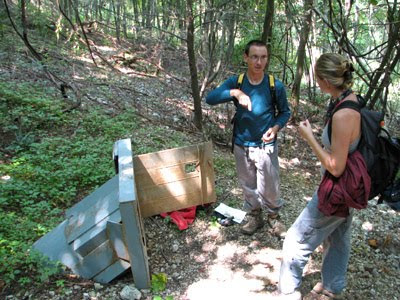 (CJ has to repeat three or four times to me in plain monosyllabic English that we are to go down. “It opens up once you get down, really.”)
(CJ has to repeat three or four times to me in plain monosyllabic English that we are to go down. “It opens up once you get down, really.”) My outstanding caving outfit consists of sturdy hiking boots, knee pads, work gloves, light rain jacket/windbreaker, helmet, and head-lamp. I was really happy to have the pads about four feet into the chute when I nearly shear off my kneecaps on something the Above World might call a “hand-rung.” Unfortunately, installed on the bottom of the pipe, it functioned more as an impediment or perhaps tailbone cruncher depending upon whether you felt a face-first or ass-first descent was appropriate. Also the pipe is about two feet in diameter, at an awkward angle, in a decidedly downward direction, and covered in wet clay. Once you get to the bottom of the chute, there is a drop down to the cave floor of around three feet, but on my stomach with my hands locked around the former kneecap killer, I couldn’t see that and so I dangled picturesquely flailing my boots around until I smacked my foot into a rocky outcropping (yipe! bad caving etiquette!). Once out of the pipe, I look around to find that “opens up” is something of an overstatement because not only is there not sufficient space to stand, there is space for only one person at a time, and the floor is a sludge of muddy gravel continuing a steep slide down and around the corner out of sight. The not-floor parts of the cave are pointy limestone covered completely with wet clay. Also, there is a stinky dead ferret lying at my feet, which: awesome. I escape the ferret and slide down a bit to find a larger area and wait for Joshua and CJ.
After much echo-ey shuffling and swearing, Joshua meets up with me and then CJ arrives. We descend rapidly for a bit and then find ourselves in a large cavern. From here are three or four routes; CJ chooses the easiest and shortest first to get us warmed up. We creep along a bit (Hey! Caving!) and then promptly come to a belly crawl. “Just a little one!” CJ chirps and worms his way through while I look on in horror. Once on the other side he peeks back at us and gives us some cheerful pointers on how to maneuver in sticky sucking clay when you have a gigantic boulder over yourself. I go next to get it over with.
 I got about half way before Joshua had the bright idea to record the action with our camera. “Hold it right there for a minute while I get the camera ready.” Like hell: “I’m not stopping now!” This is about where I started to think about earthquakes and quarry blasting and torrential rainfall and all those things that one should maybe keep far from one’s mind while inching through tight crevasses. The clay sticks to you and so inching along is strangely tiring; this crevasse is maybe a little over a body length long—not bad, I’m sure—but I’m feeling a little panicky by the time I make it to the other side because now there is a belly crawl between me and the entrance.
I got about half way before Joshua had the bright idea to record the action with our camera. “Hold it right there for a minute while I get the camera ready.” Like hell: “I’m not stopping now!” This is about where I started to think about earthquakes and quarry blasting and torrential rainfall and all those things that one should maybe keep far from one’s mind while inching through tight crevasses. The clay sticks to you and so inching along is strangely tiring; this crevasse is maybe a little over a body length long—not bad, I’m sure—but I’m feeling a little panicky by the time I make it to the other side because now there is a belly crawl between me and the entrance. A minute later, Joshua is inching through and CJ is scouting ahead a little; he calls back, “So uhm, I sort of forgot about this one—Cheyenne, there is another, uh, tight spot, but I think I seem to remember it’s a little shorter.”
(Oh Christ.)
It actually is a little shorter and I’m trying to not freak out now as we head on. The majority of the route consists of butt-slides and clambering because there just is not a normal “floor” anywhere in here.



Caving photos are weird in that there is no sense of reference; in this section, you emerge head first into a decline, which is mildly awkward. After a bit we come to the “Art Gallery,” a squat tunnel where dozens of people had made weird little clay snowmen and signed their names with clay-worm letters. CJ says the cave is frequented by boyscout troops, among others. Yeesh—the thought of ten kids in this cave is enough to make me hyperventilate. Also, I’m such a wuss.
We get to a section where the only way further is a hole in the floor, which would be a belly crawl in any other orientation but in this case is a rapid downward descent with only the gummy clay to keep you under control. CJ goes right down and calls up that there is a small room and it is the end of the passage. He says there might be space down there for three people and there are some cool crystals down there. Joshua picks his way down but I decline in favor of resting in a lovely stand up-able space and because someone has to guard our packs from marauding boy scouts or cave-trolls.

Returning went much more smoothly; in fact, we were back in the main room near the entrance in no time. The belly crawls didn’t bug me so much when I could put them behind me.
We hung out a bit catching our breath and drinking some water (caving is really tiring even though we were primarily on our feet the majority of the time—you are constantly balancing and stooping and trying not to brain yourself on all the sticky-downies). I was actually feeling a bit like, “that’s it?” when it turned out it wasn’t because CJ was up and disappearing down a different branch of the cavern.
This tunnel was similar to the first but with fewer belly crawls. It also didn’t take very long to get to the bottom and back to the main cavern. The third tunnel had us hunting around for the entrance; this is because it is a 10-inch high, two foot-wide hole off the floor of the cavern. I kept repeating, “We’re going in THAT?” and “Holy crap!” but CJ was already though it and hell if I was going to get left behind with the rabid boy scouts. This was definitely the tightest squeeze and it the pointy rocks were indeed out to get the vital organs but it lasted only a few feet whereupon it opened up and went down rapidly. This section of the cave was the most interesting but also the most difficult mostly because it involved stemming across a crevasse that went down out of sight. The idea of slipping and getting wedged down there was enough to keep me in a persistent state of neurosis. I swore like a sailor with much frequency during this stretch.
At the bottom of the crevasse-defying stemming descent was a huge room—not so much in girth but in height because it went farther up than our flashlights could reach. Ginormous boulders dangled out of the gloom above our heads and their offspring littered the floor of the cavern. There were cool curtain-like (calcite?) formations and seams running through the rock walls. Here we had interesting discussions about such topics as how frequently those looming boulders fell and how feasible would it be to find one’s way back if all our flashlights went out. We turned off the flashlights for about two and a half seconds to marvel, albeit briefly, at the complete lack of light. Yep, dark. Time to head back now.
 This looks like a belly crawl but it is not; CJ and I are heading vertically up a slimy chute, and apparently pretty goddamned happy about it too. (Note pack sitting on horizontal ledge over our heads.)
This looks like a belly crawl but it is not; CJ and I are heading vertically up a slimy chute, and apparently pretty goddamned happy about it too. (Note pack sitting on horizontal ledge over our heads.) Eventually we returned to the evil little belly squeeze over pointy rocks, which on the uphill is a real gut-punching menace. Once back to the main cavern, we scrambled back upwards through the sludgy gravel to the tiny room with the dead ferret. Climbing out of the metal pipe was even more difficult than sliding down, not surprisingly, and right as we got to the top, we could look up at the sky over the rim of the pipe where there was one ginormous and ugly spider crouched about six inches over your face. Ungh god.
Outside it was about twelve billion degrees and we were covered with gunk and had on all this protective gear and we were sweating from the squeeze uphill. But wait, hold everything! We need the Intrepid Cavers Mission Completed photo.
 Yeah, didn’t turn out so well. That’s because our camera was approximately 54 degrees and, like I mentioned, Pennsylvania was 12,0000,0000000,00,000 degrees or some insane bullshit, and the lens was all fogged.
Yeah, didn’t turn out so well. That’s because our camera was approximately 54 degrees and, like I mentioned, Pennsylvania was 12,0000,0000000,00,000 degrees or some insane bullshit, and the lens was all fogged.We backtracked up the beer-bottle strewn hillside, stripped down and chucked our muddy duds all over the street once more. Then we went out for microbrew and bar food, arguably the best part about caving.
you can source in: http://sv-timemachine.net/
Tuesday, August 24, 2010
Wednesday, July 14, 2010
Mountaineering
Just like in different great outdoor locations in other countries, the mountain peaks in the Philippines differ in altitude. Famous mountain peaks are identified according to height and features. High peaks become famous as more mountaineers would explore and gain fulfilment for conquering such heights. While other peaks belonging to average altitudes become famous because of their great historical background or the legends that bind with it, still others are popular because of their unique appearance, location and especially the level of difficulty a mountaineer has to overcome before reaching the peak of success.
Philippine Mountain Classifications
The old system to assess a climb ranges from identifying three (3) aspects only:
1. Level
2. Elevation
3. Days required in completing the adventure (ascent and descent)
However, this system is not as effective as it does not precisely identify which peaks are difficult or easy. This sometimes can cause unexpected hazards due to unpreparedness.
Recently, experienced mountaineers are adopting a new system to gauge climbing difficulty for a particular mountain peak:
Difficulty Scale (9 Grade System) – mountaineers grade the mountain peaks, and estimated results are obtained by comparing one peak to another. This scale also includes lengths of hike, travel time from jump-off point, ascent, and arriving at the peak itself as well as the extremes of its environmental condition.
Major/ Minor Assessment – this is the oldest classification used by local mountaineers and is still part of the new system. This is done by considering the trekking hours and the amount of efforts to exert. If a certain mountain peak can be hiked for 4-5 hours day trip with less effort, it falls under Minor classification; Major Climbs usually take more than that duration.
Trail Classification – research source states, this is a universally-recognized, absolute scale.
1 – Walking (easy stroll)
2 – Hiking along a path/rugged terrain
3 – Scrambling (using hands for balance)
4 – Climbing easy cliffs but with enough drop off- beginners should be roped.
5 – Using free hands as climbing method
6 – Very difficult and need to use artificial method
These classifications comprise the “specs” of the climb. Such classifications will increase awareness in the part of the mountaineers before delving into the Philippine wilderness. Even foreign mountaineers can have at least a head start on what to expect in a particular climb. Although international scales include other aspects like the number of calories and energy needed for each climber, other local mountaineers in some areas do not necessarily follow this requirement.
Undoubtedly, a real adventurer is more interested and eager to conquer the country’s most challenging and most famous mountain peak. The more challenging, the more adrenaline rush and that is for a total of a once in a lifetime experience!
